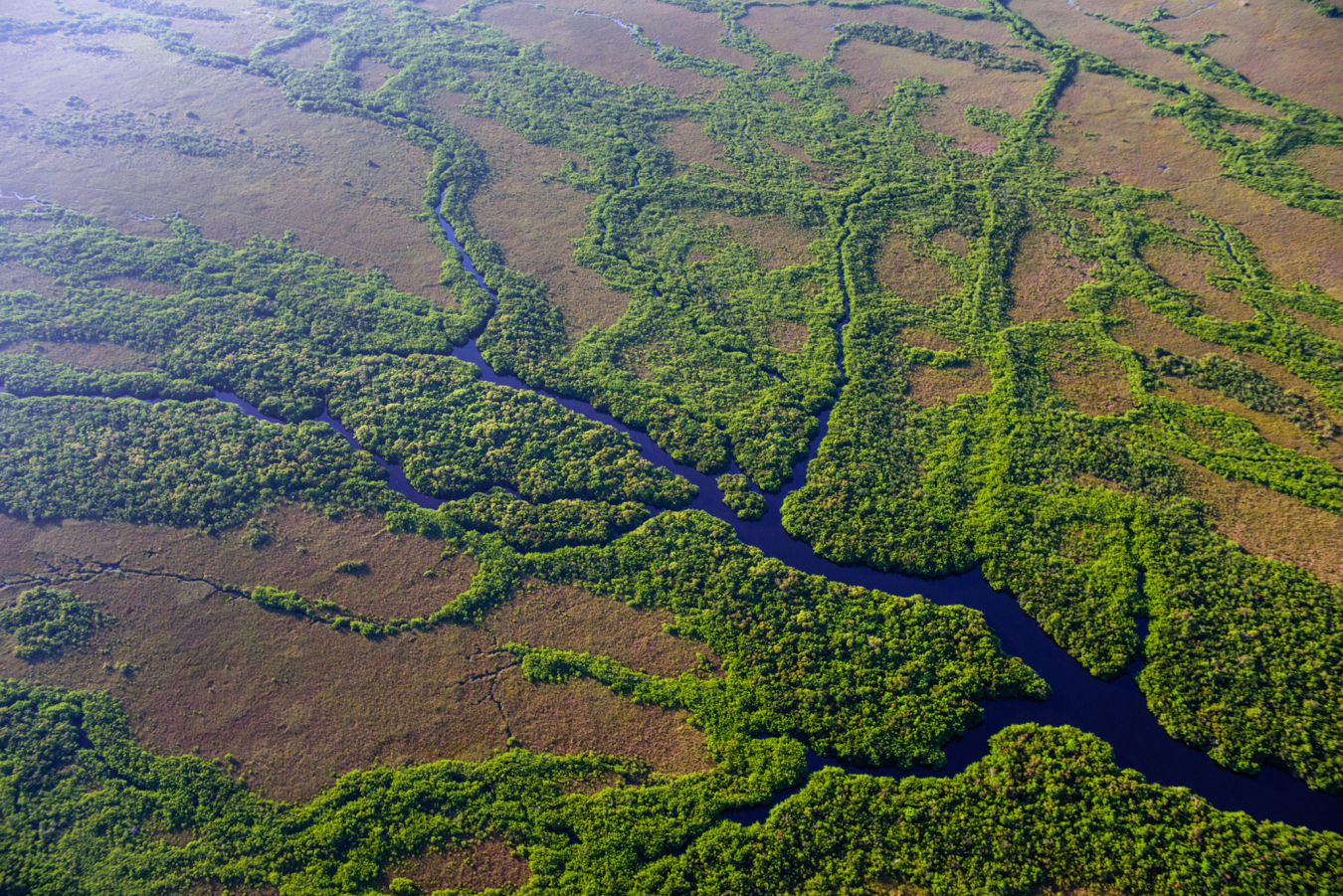The US Department of Energy (DOE) Joint Genome Institute embarked on a pilot project with biology students from Boca Raton Community High School in FL
January 24, 2020
Editor's note: this article was cross posted from the LBNL Joint Genome Institute website.
The Florida Everglades evokes images of fanboats skimming over swamps, while alligators peer through the waters and clouds of insects hover just above. Described as a "river of grass" that stretches some 580,000 square miles across southern Florida, they encompass a wide range of ecosystems ranging from wetlands to tree islands to cattails.
In 2018, the US Department of Energy (DOE) Joint Genome Institute (JGI), a DOE Office of Science User Facility located at Lawrence Berkeley National Laboratory (Berkeley Lab), embarked on a pilot project with biology students from Boca Raton Community High School in Palm Beach County, Florida. The class sought to apply the latest molecular techniques to learn more about the microbial communities in the Arthur R. Marshall Loxahatchee National Wildlife Refuge, a 226-square mile area of the northern Everglades in Palm Beach County, and particularly about the microbes that play roles in the methane cycle. Their data report, which provides the only known reference microbiome data sets for the Loxahatchee Refuge, was published in the journal Environmental Microbiome.
"Before JGI was involved, I was not sure we could even complete a full project. Every other group I contacted was happy to offer advice but declined to offer actual scientific help," said Jonathan Benskin, who teaches the A-Level Advanced International Certificate of Education (AICE) Biology class at Boca Raton Community High School. "I can't thank JGI enough for being willing to take a risk on a group of public high school students to see this project through to completion. JGI does not only contribute to the body of current scientific knowledge, they are also equipping the next generation of scientists that will help shape all of our futures."
Proposing a Research Experience
Benskin wanted to give his high school juniors a research project experience and one of his email inquiries, sent through JGI's Integrated Microbial Genomes & Microbiomes (IMG/M) system, reached Emiley Eloe-Fadrosh, who heads the Metagenome Program. "After discussing the project with him, I was inspired by his enthusiasm and drive to give his students this experience. My current career path was heavily influenced by my own high school biology teacher, who helped connect me with internships and training at the Clorox Company and Lawrence Livermore National Laboratory," she said. "The JGI is one of the only places that could take on a project like this because we have the resources as a user facility. The Metagenome Program team provided guidance and encouragement to submit a proposal, which was approved as a Director's Science project by JGI Director Nigel Mouncey."
Eloe-Fadrosh decided, "If we're going to have this be a project, we want it to be a really comprehensive learning experience." Over the course of the year, she and other JGI staff conducted several real-time, video-conferenced seminars with the class. The 18 students organized and conducted a field trip, armed with the proper permits, to the refuge to collect soil samples from multiple locations. Back in the classroom, JGI researchers walked students through the processes of DNA sequencing, metagenome assembly, and even an introduction to data analysis using the IMG/M system.
A Comprehensive Learning Experience
"When I originally envisioned the project of the class, I knew that I wanted them to write a final paper that could be published. Watching 18 students working to create a paper simultaneously in the same document was a sight that I will remember," said Benskin. "The best part of the entire project was being able to tell the students that the paper was accepted for publication in a reputable scientific journal. It was gratifying to see the empowerment displayed across each of their faces."
Eloe-Fadrosh considers the experience the highlight of her past year's work at the JGI. As the students look forward to graduating high school in a few months, Benskin shared his own reflections on the experience.
"'Doing science' is something that might be talked about in high school and even undergraduate college classes, but it is an experience that very few students in these classes are allowed to do. I hope they can walk away from this project empowered to go into college and seek out opportunities that they might have previously believed they would not be capable of accomplishing."

